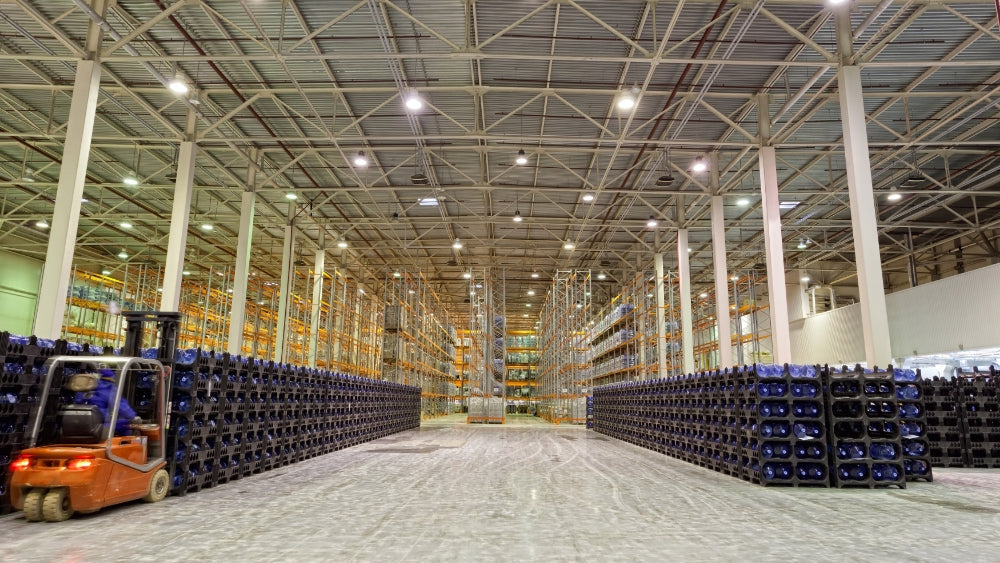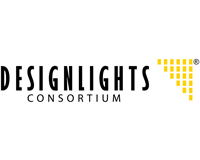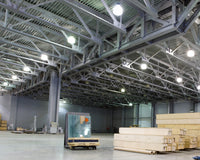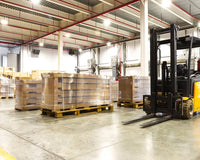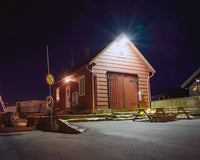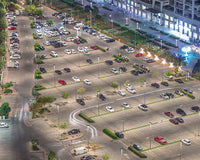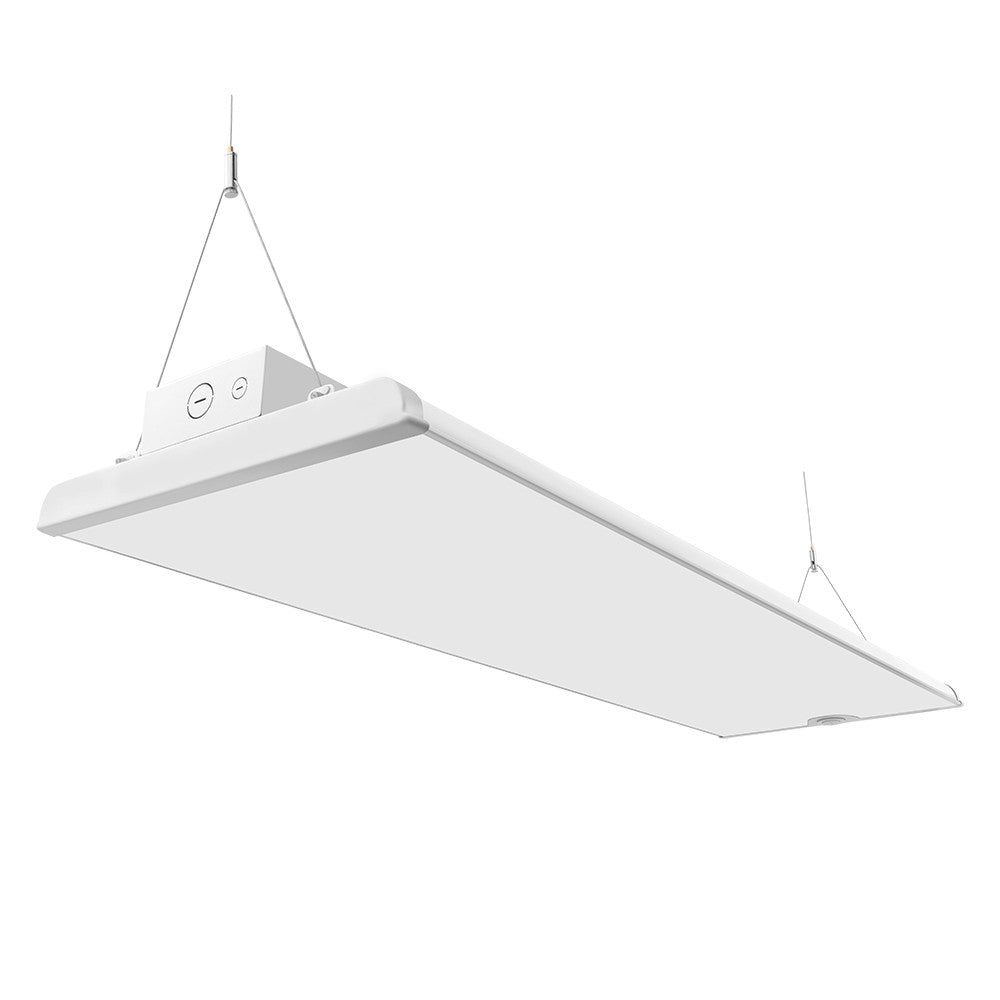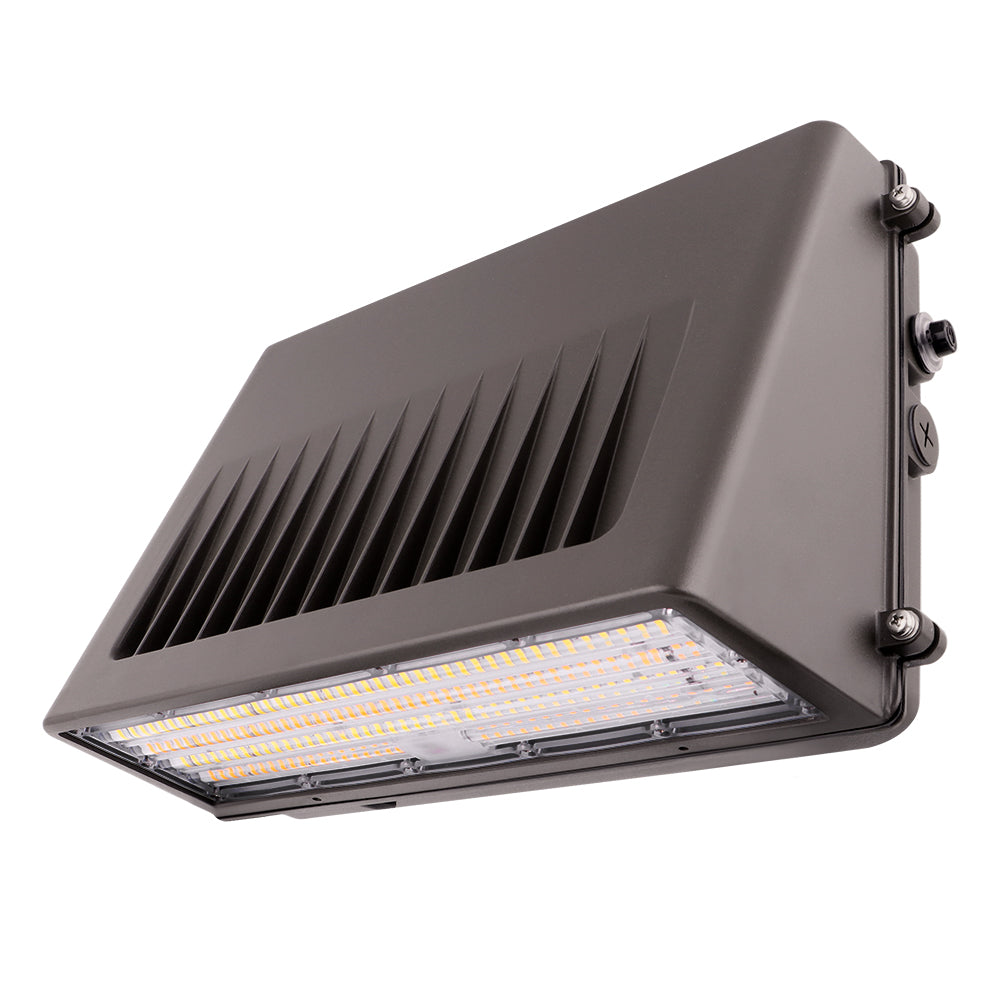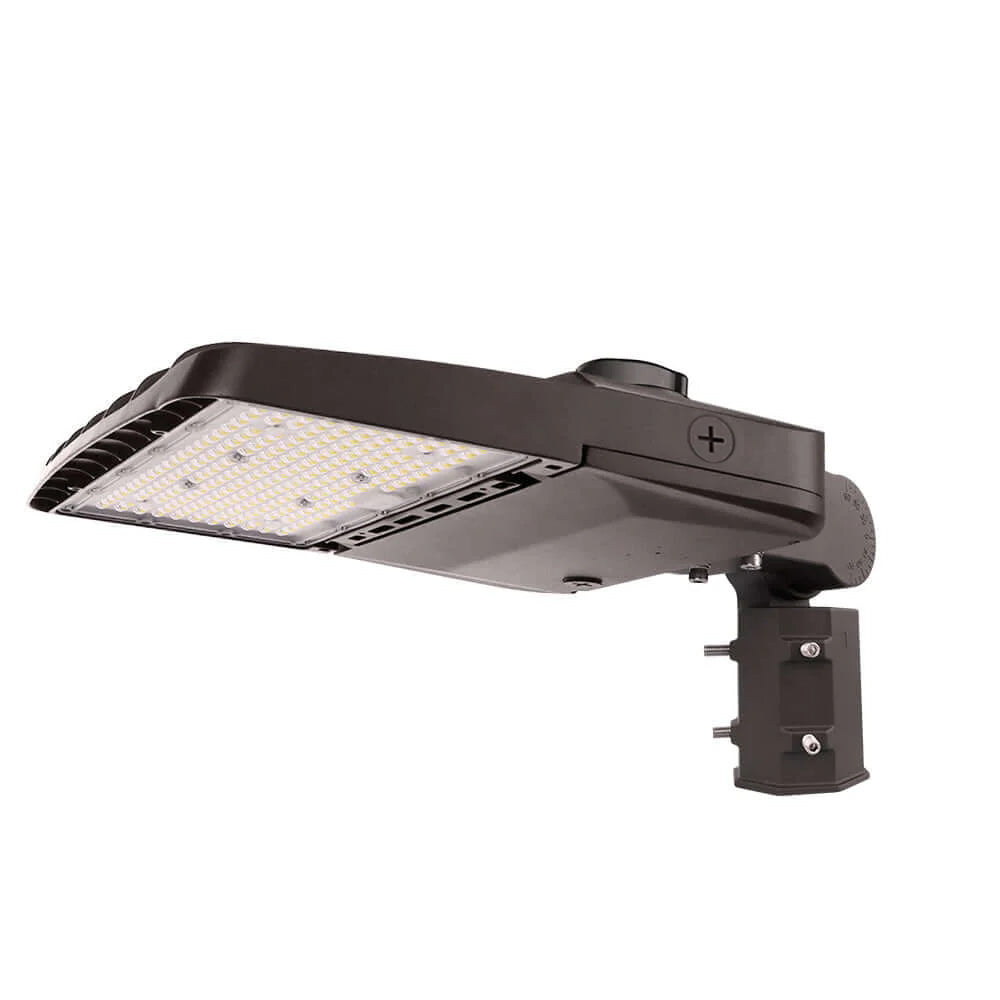Whether you're doing new warehouse construction or replacing light fixtures in an existing building, one of the questions you'll be asking is, "How many LED high bay lights do I need?" In this article, we'll explore the factors determining the number of LED high bay lights required, along with the guidelines you can use for this estimate. We've also included tips for optimizing the lighting system to achieve maximum energy efficiency and illumination levels. Once you've reviewed all that, Revolve LED can help you choose the best LED high bay light fixtures for your project.
Table of Contents
Are LED High Bay Lights the Right Solution for Your Space? Calculating the Number of LED High Bay Lights Needed A Few Other Considerations Frequently Asked Questions About How Many LED High Bay Lights Are Needed Related Articles: How Many LED High Bay Lights Do I Need?
Is the LED High Bay Light Fixture the Right Solution for Your Space?
Before you decide how many lighting fixtures you'll need, let's make sure you've chosen the right type of illumination for your project.
- Are your ceilings 15-20 feet or higher?
- Do you need bright and uniform illumination for tasks that require clear visibility, such as assembly lines, storage areas and sports arenas?
- Are you looking for lighting fixtures that can withstand harsh environments and high temperatures typically found in industrial settings?
If you answered "yes," to all of these, the LED high bay light fixture will definitely be the way to go.
Calculating the Number of LED High Bay Lighting Fixtures Needed
Determining the appropriate quantity of LED high bay lighting fixtures for your space requires careful consideration of various factors. By following a systematic approach, you can ensure optimal lighting levels and coverage.
Step 1: Determine the Total Illuminance Required
Illuminance is the amount of light falling on a surface. Foot-candles (fc) and lux (lx) are common units used to measure illuminance. Different spaces have specific illuminance requirements based on their purpose. For example, industrial workspaces require higher illuminance levels than storage areas.
Step 2: Match Illuminance Levels to the Space's Purpose
Identify the activities performed in the space and refer to lighting design guidelines or industry standards to determine the recommended illuminance levels. For instance, a warehouse may require around 30-50 fc (320-540 lx) for general tasks, while detailed inspection areas may need higher levels, such as 100-200 fc (1,080-2,150 lx).
Step 3: Select the Appropriate Lumen Output per LED High Bay Light Fixture
Lumen output indicates the total amount of light produced by an LED high bay light fixture. Look at the efficiency and lumen output of the LED high bay lights you're considering. Higher lumen output fixtures will provide brighter illumination.
Step 4: Conduct a High Bay Lighting Layout Analysis
Use lighting design software or an LED high bay lighting calculator to perform a high bay lighting layout analysis. Lighting design software or online tools allow you to represent your space and simulate lighting layouts digitally. By inputting relevant data such as room dimensions, mounting height, desired illuminance levels and fixture specifications, these tools can generate recommendations on the number and placement of LED high bay lights. At Revolve LED, we offer free lighting layouts, so if you have a project you need assistance with, we can help.
Step 5: Consider the Light Beam Angle and High Bay Light Spacing Between Fixtures
The light beam angle determines the spread of light from each fixture. Wider beam angles cover larger areas, while narrower angles provide more focused lighting.
Strike a balance between beam angle and high bay light spacing between fixtures to ensure uniform illumination without creating dark spots or excessive overlap.
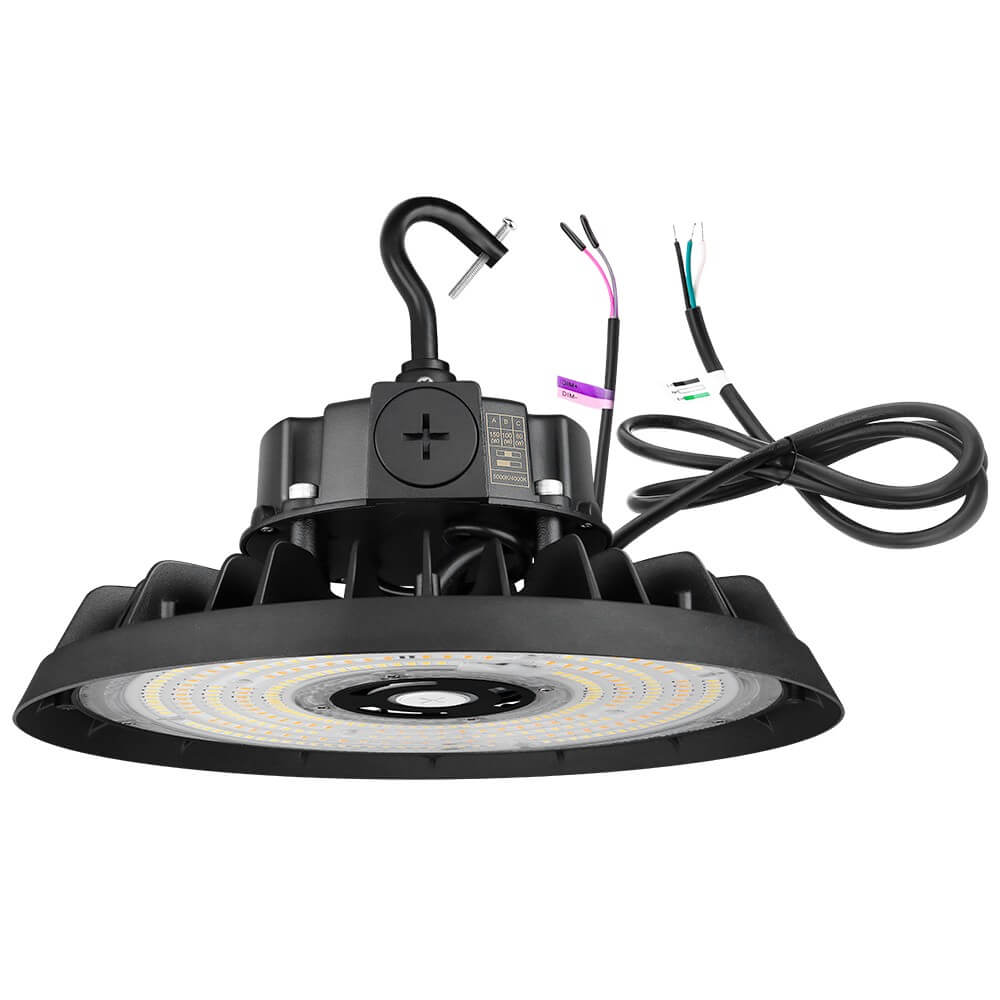
Ceiling Height: 12-20 feet
Dist. Between Fixtures: 15-20 feet
Lumens: 12,000 to 30,000
Watts: 80/100/120/150W
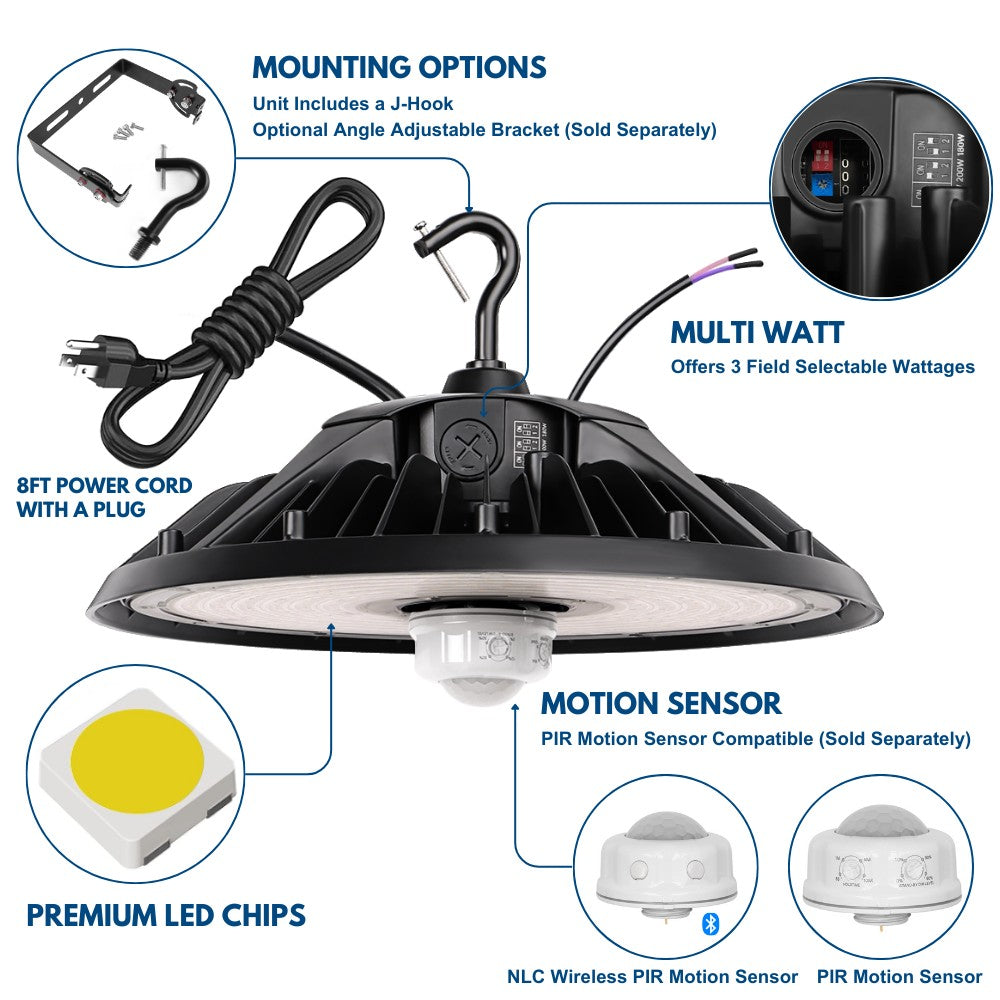
Ceiling Height: 20-35 feet
Dist. Between Fixtures: 25-35 feet
Lumens: 27,000 to 36,000
Watts: 180/200/220/240W
A Few Other Considerations
Before making your final decision, here are a few final thoughts to keep in mind:
- High bay light spacing is key. Fixtures that are too close together aren't energy efficient – but if they're too far apart, you'll wind up with poor coverage.
- An LED high bay light fixture is your best choice. LEDs last longer, are cooler and highly efficient. While they may cost you more upfront, they'll save you money in the long run.
- Know what color light will work best in your environment. The most prevalent choice for LED high bay lighting is the 5000K color temperature, which emits a cool white illumination that closely resembles daylight. This color temperature provides accurate and vibrant lighting in various commercial spaces, including warehouses, manufacturing facilities and other environments that demand precise illumination.
Frequently Asked Questions About How Many LED High Bay Lights Are Needed
We've answered a few commonly-asked questions about how many LED high bay lights are needed for a warehouse or other industrial facility. If you have additional concerns, please contact us.
Why Is Proper Placement of LED High Bay Lights Important?
Proper placement ensures uniform illumination, minimizes shadows or dark spots and maximizes the effectiveness of the lighting system. It contributes to a well-lit and productive environment while optimizing energy usage.
Where Are High Bay Lights Commonly Used?
High bay lighting fixtures are specifically designed for spaces with high ceilings, typically found in industrial and commercial settings such as warehouses, manufacturing facilities, gymnasiums and retail stores.
What Are the Advantages of LED High Bay Lighting Compared to Traditional Lighting Solutions?
LED high bay lighting has several key advantages over traditional high bays such as metal halide or fluorescent lamps:
- Energy Efficiency: An LED high bay light fixture is highly energy-efficient. It uses far less electricity than traditional lighting technologies for the same amount of light output.
- Long Lifespan: LEDs typically last around 50,000 hours or more, reducing the cost and frequency of replacements.
- Instant On: Unlike traditional high bay lights that may require a warm-up period, LED lights provide instant illumination.
- Better Light Quality: LED high bay lighting produces a more consistent, high-quality light that can improve visibility and safety in the workspace.


